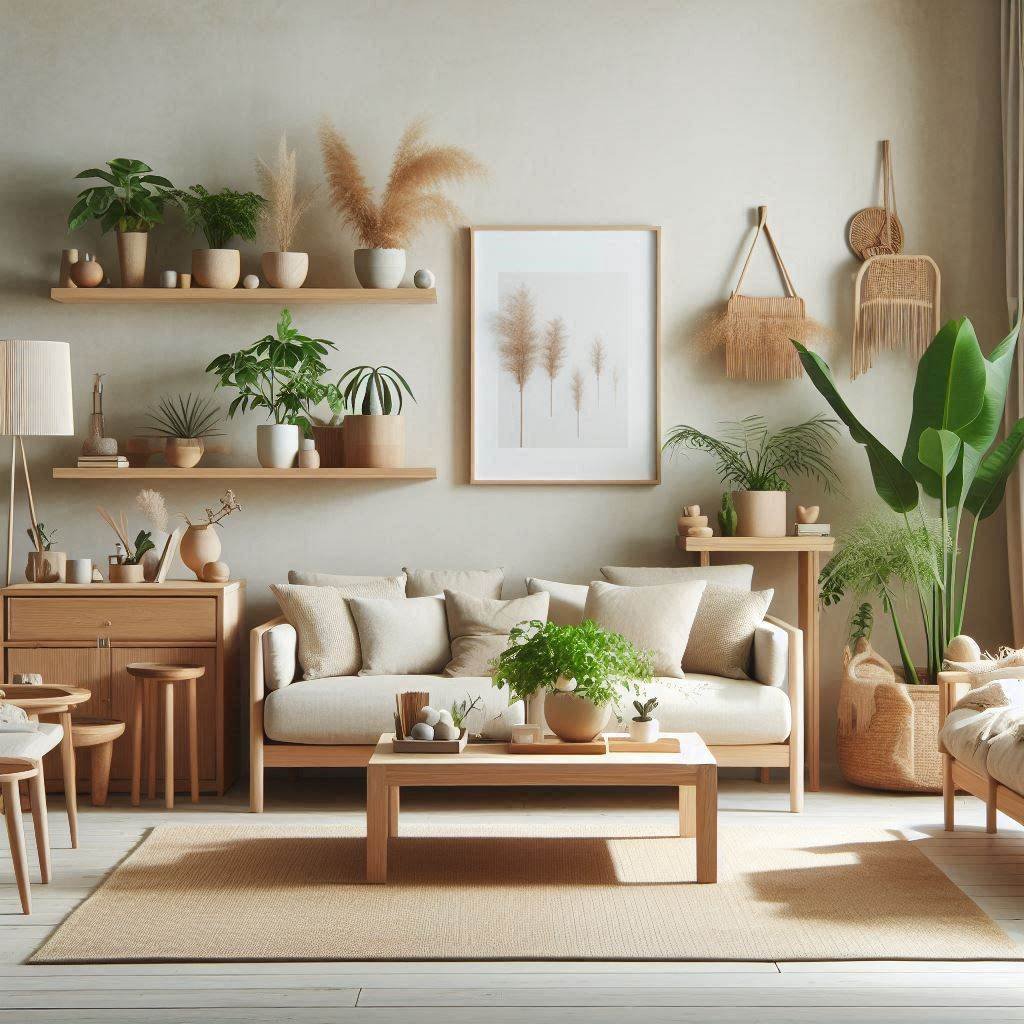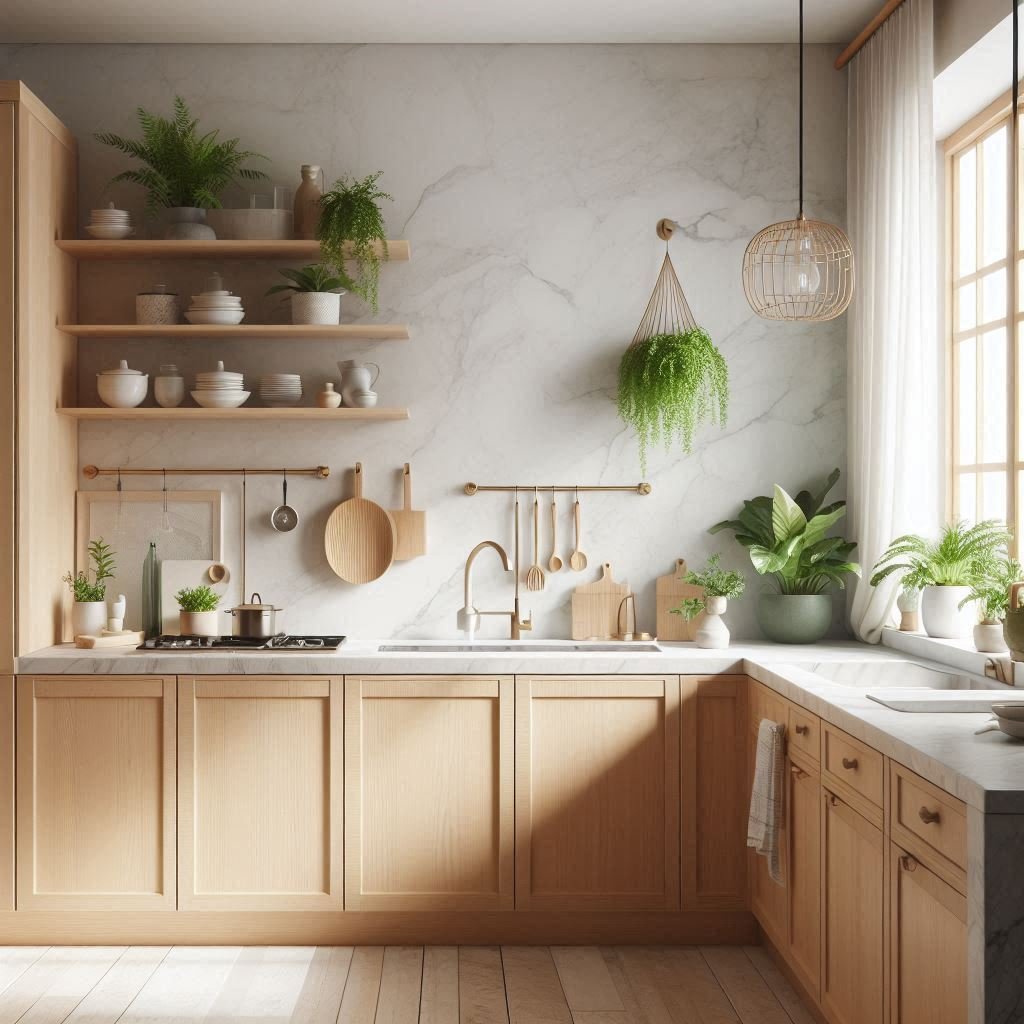15 Japandi Bedroom Ideas for Serene Style
Explore 15 Japandi bedroom ideas for serene style, blending Scandinavian simplicity with Japanese elegance. Discover tips for creating a calming and minimalist bedroom that exudes tranquility.
Japandi style is a harmonious blend of Scandinavian simplicity and Japanese minimalism, creating spaces that exude tranquility and elegance. This design trend focuses on natural materials, neutral color palettes, and functional furniture, all aimed at fostering a sense of calm and serenity. Imagine a bedroom where clean lines meet warm wooden textures, and a muted color palette sets the stage for relaxation. Whether you're looking to overhaul your bedroom decor or add subtle touches of this style, Japandi offers a perfect blend of warmth and minimalism. In this article, we'll explore 15 Japandi bedroom ideas that will inspire you to create a serene and stylish sanctuary. Let's dive into the world of Japandi and discover how to transform your bedroom into a peaceful retreat.
1. Neutral Color Palette
In Japandi design, a neutral color palette establishes a tranquil and inviting space. Begin with a foundation of soft whites and beiges to enhance the lightness and spaciousness of the area. Introduce muted earth tones, such as warm browns and soft greens, to infuse warmth and richness into the design. For a dynamic contrast, incorporate subtle greys and blacks as accent colors. These darker tones help to outline and accentuate architectural features, adding depth and focus to the serene aesthetic. This carefully balanced color scheme not only promotes relaxation but also harmonizes the minimalist and natural elements characteristic of Japandi interiors.
2. Natural Materials
In Japandi design, the integration of natural materials is crucial for creating a warm and textural ambiance. Opt for wooden furniture with clean lines, such as low-profile beds, dressers, and nightstands, available in both light and dark wood finishes to suit different tastes and color schemes. Bamboo and rattan accents, including baskets, lampshades, and chairs, introduce an organic and sustainable element to the decor. Additionally, incorporate stone and ceramic accessories like vases, bowls, and sculptures, which add an earthy and grounded feel to the environment. These natural materials not only enhance the aesthetic appeal but also promote a sense of calm and connection to nature, fundamental to Japandi style.
3. Minimalist Furniture
Minimalist furniture is essential in crafting the Japandi aesthetic, prioritizing both functionality and style. Opt for low-profile beds that not only underscore the design's emphasis on simplicity but also enhance the perception of spaciousness within the room. Embrace streamlined storage solutions such as built-in closets and under-bed storage compartments to maintain a clutter-free environment. Choose functional yet stylish nightstands that hold essentials without dominating the space. This minimalist approach not only keeps the room looking organized and open but also aligns with the Japandi principle of serene and uncluttered living spaces, where each piece of furniture is both practical and visually appealing.
4. Simple and Clean Lines
Japandi style, renowned for its simplicity and clean lines, thrives on the use of geometric shapes and symmetrical arrangements to establish a modern and cohesive environment. Opt for furniture and decor that embody simple geometric forms to enhance the aesthetic appeal and maintain the design's minimalist ethos. When arranging these elements, aim for symmetry to create a sense of balance and harmony within the space. To keep true to the Japandi principle of tranquility, minimize clutter on surfaces by carefully selecting a few meaningful decorative items rather than an abundance of adornments. This approach not only ensures a visually pleasing space but also promotes a calm and serene atmosphere.
5. Incorporating Greenery
Incorporating greenery is a delightful way to infuse life and a sense of freshness into a Japandi-style bedroom. Select indoor plants that not only thrive in low light but also enhance the room's calm and restful ambiance—options like snake plants, fiddle leaf figs, or peace lilies are ideal for their low-maintenance and air-purifying qualities. For a touch of traditional Japanese aesthetics, consider adding a bonsai tree, which brings an artistic and mindful element to the space. To keep the Scandinavian influence alive, style your plants simply; group them in minimalist pots or opt for hanging planters that align with the Japandi principle of functional, clutter-free decor. This approach ensures the space remains tranquil and balanced, harmonizing nature with the serene decor.
6. Soft Textiles and Layering
Soft textiles and thoughtful layering are pivotal in crafting a cozy and inviting atmosphere in a Japandi-style bedroom. Opt for linen bedding, celebrated for its natural texture and breathability, which makes it perfect for all seasons. Complement this with wool throws and cushions that provide extra warmth and a plush feel, inviting relaxation and comfort. Additionally, consider layering rugs in neutral tones to add depth and softness underfoot. This not only enhances the visual warmth of the room but also contributes to the overall serene and welcoming ambiance, aligning with the Japandi philosophy of harmonious and mindful living.
7. Lighting for Ambiance
Lighting is a central element in establishing the ambiance of a Japandi bedroom, blending functionality with aesthetic simplicity. Traditional Japanese paper lanterns offer a gentle, diffused light that envelops the room in warmth, enhancing the serene and tranquil vibe essential to Japandi style. For ambient lighting, consider using table lamps or wall sconces with soft, warm bulbs to create a soothing and relaxing atmosphere, perfect for unwinding. Additionally, minimalist pendant lights can act as a stylish focal point, contributing to the room’s clean and uncluttered aesthetic while providing practical illumination. These lighting choices not only fulfill practical needs but also embody the minimalist and nature-centric principles of Japandi design.
8. Creating a Zen Corner
Creating a Zen corner in your Japandi bedroom can transform an ordinary space into a sanctuary of peace and meditation. Start by designating a quiet corner of the room for your Zen area. Place a comfortable meditation cushion or a neatly folded tatami mat to sit on, ensuring it invites calm and focus. Include a small, low table to hold items that enhance the meditative experience, such as candles for soft lighting, incense for aromatic tranquility, or a serene bonsai plant. Opt for low seating like floor cushions to maintain a close connection to the earth, promoting grounding and stability during meditation or relaxation. Keep the decoration minimalistic, choosing items that evoke serenity and aid in mindfulness practices, thus supporting a space that is both calming and spiritually nourishing.
9. Artwork and Wall Decor
Incorporating artwork and wall decor in a Japandi bedroom embraces simplicity and the beauty of nature. Opt for minimalist prints or simple line art that subtly enhances the room without dominating it. Nature-inspired artworks, such as serene landscapes or delicate botanical illustrations, help forge a connection with the natural world, fostering a tranquil atmosphere. Adding a piece of Japanese calligraphy can introduce an element of cultural depth, blending artistic elegance with philosophical subtlety. These choices should complement the room's muted color palette and contribute to an overall sense of peace and harmony, aligning with the Japandi ethos of blending Scandinavian functionality with Japanese minimalism.
10. Incorporating Tatami Mats
Tatami mats, traditional Japanese flooring made from woven straw, introduce an authentic element to Japandi interiors. Utilize these mats in various ways to enhance the aesthetic and functionality of the space. As a bed platform, tatami mats offer a low, grounded sleeping arrangement that aligns with minimalist principles. They can also be employed to create distinctive seating areas, providing a cozy, traditional touch that invites relaxation. When used as a general floor covering, tatami mats contribute texture and a soothing natural quality to the room, reinforcing the Japandi commitment to blending natural elements with simple, serene design.
11. Open Space and Airiness
Open space and airiness are vital in crafting a serene Japandi bedroom, embodying the ethos of minimalism and tranquility. To achieve this, maintain a decluttered layout, carefully selecting furniture that serves purpose without overcrowding. Opt for light, airy curtains which not only enhance privacy but also allow natural light to suffuse the space, promoting a bright and open atmosphere. Incorporating open shelving offers practical storage solutions and the opportunity to display decorative items without encumbering the room. This approach ensures the bedroom remains a bastion of calm and spaciousness, true to the Japandi style's emphasis on breathable, uncluttered environments.
12. Using Shoji Screens
Shoji screens, with their delicate translucent paper framed by wood, epitomize traditional Japanese craftsmanship. In a Japandi-style bedroom, these screens serve multiple functional and aesthetic purposes. They can effectively divide the room into distinct areas, maintaining an open yet organized layout. As window treatments, Shoji screens allow for gentle natural light to permeate the space, softening the interior and enhancing the serene atmosphere while ensuring privacy. Additionally, using Shoji screens as closet doors can infuse a subtle traditional Japanese aesthetic into the bedroom, marrying functionality with cultural design in a harmonious Japandi setting.
13. Natural Light and Views
Maximizing natural light and views plays a crucial role in cultivating the serene ambiance characteristic of a Japandi bedroom. Large windows or glass doors not only flood the space with sunlight but also visually extend the room into the outdoors, offering calming views of nature that can significantly enhance the room's aesthetic and mood. Adding skylights introduces an additional source of natural light, brightening the space from above and providing a unique architectural element that adds to the room’s open and airy feel. Strategically positioning the bed or seating areas near these windows or under skylights can connect the indoors with the outdoors, making nature an integral part of the daily experience and reinforcing the tranquil Japandi philosophy.
14. Wabi-Sabi Elements
Wabi-sabi, the Japanese aesthetic that finds beauty in imperfection, brings depth and soul to a Japandi bedroom. Embrace this philosophy by incorporating materials and decor that showcase age and wear. Opt for furniture with distressed wood finishes or metal with a natural patina, each piece telling its own story of time and use. Decorative elements like hand-thrown pottery or textiles with uneven weaves add a tactile dimension that celebrates artisanal craftsmanship. Choose decor that highlights natural flaws—such as a vase with an irregular shape or a rug with faded colors—to create a space that respects the authenticity and transient beauty of the natural world, making your bedroom not just a place of rest but also a sanctuary of peace and reflection.
15. Personalizing Your Japandi Bedroom
Incorporating personal touches into your Japandi bedroom not only enhances its aesthetic but also infuses it with a sense of your own history and style. Display family heirlooms or pieces collected from your travels as decor, making them focal points that tell your personal story. Artwork or crafts created by you or loved ones add a layer of personality, showing off your interests and talents. For a homely and inviting feel, arrange family photographs in minimalist frames that complement the serene Japandi style. These personal elements help transform the space into a sanctuary that reflects and celebrates your life and experiences.
Conclusion
Creating a Japandi bedroom is all about finding the perfect balance between simplicity and warmth. By incorporating natural materials, a neutral color palette, and minimalist furniture, you can create a serene and stylish space that promotes relaxation and tranquility. Whether you embrace the full Japandi aesthetic or incorporate just a few elements, these ideas will help you transform your bedroom into a peaceful retreat. So, take inspiration from these 15 Japandi bedroom ideas and start creating your dream space today!
Frequently Asked Questions
1. What is Japandi style?
Japandi style is a design trend that combines Japanese minimalism with Scandinavian simplicity, focusing on natural materials, a neutral color palette, and functional furniture.
2. How can I add warmth to a Japandi bedroom?
Add warmth by incorporating natural materials like wood and bamboo, soft textiles like linen and wool, and warm lighting such as paper lanterns or soft ambient lights.
3. What colors are commonly used in Japandi design?
Japandi design commonly uses neutral colors like soft whites, beiges, muted earth tones, subtle greys, and blacks. These colors create a calm and serene atmosphere.
4. How can I incorporate greenery into a Japandi bedroom?
Incorporate greenery with indoor plants like snake plants or bonsai trees. Use simple pots or hanging planters for a minimalist look, and consider adding a small indoor garden or vertical plant display.
5. What are some key elements of a Japandi bedroom?
Key elements include a neutral color palette, natural materials, minimalist furniture, clean lines, soft textiles, ambient lighting, and personal decor that reflects the Wabi-sabi philosophy of embracing imperfection.
Stay up to date with our latest ideas!




















